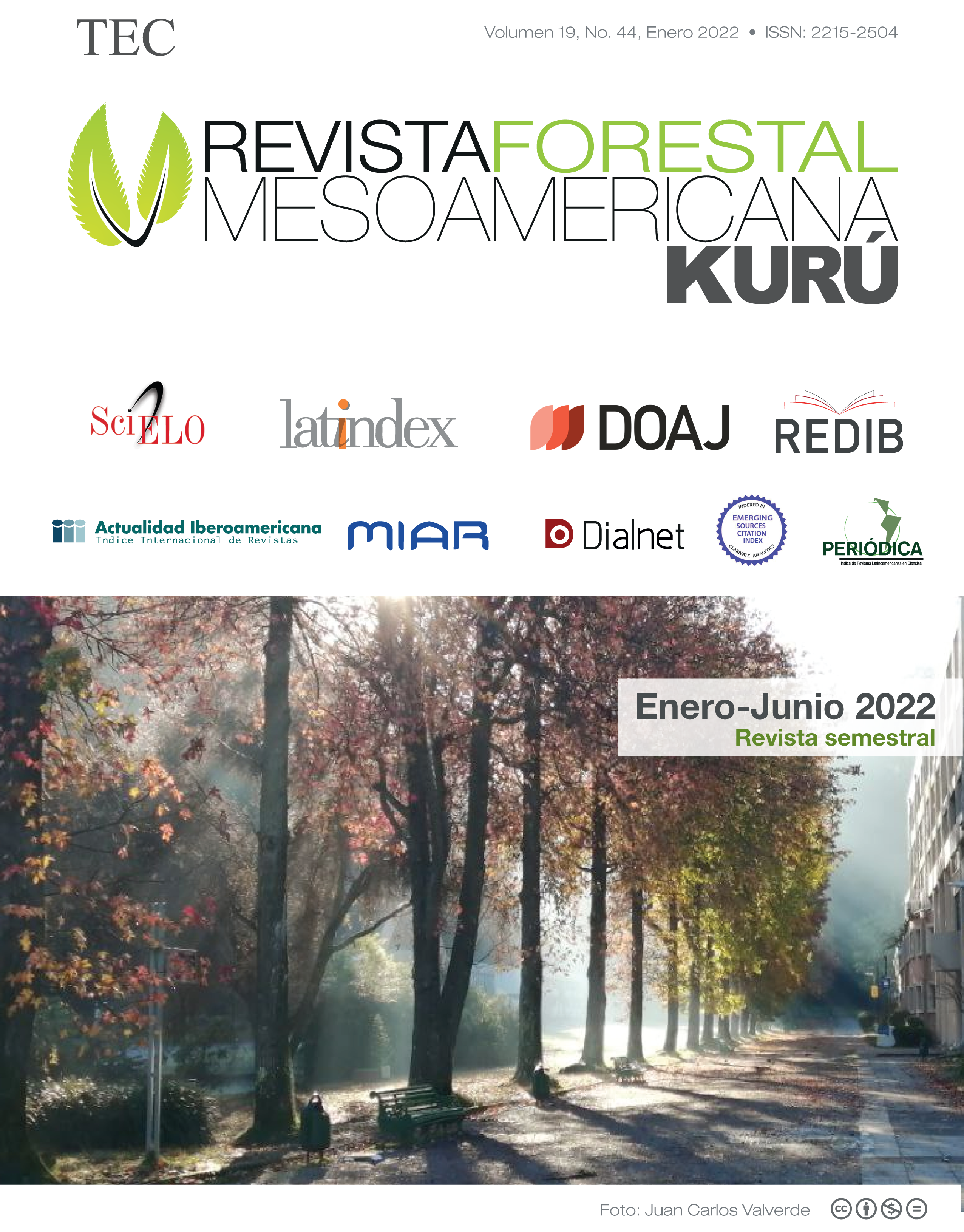Incorporation of sewage sludge to the substrate of seedling production of Bambusa vulgaris through cuttings
Main Article Content
Abstract
The objective of the study was to evaluate the growth of B. vulgaris seedlings by incorporating five doses of sewage sludge (0, 10, 30, 50, and 70%) into the substrate, with three types of propagules. The design used was completely randomized (DIC), with 30 replicates per treatment. At 30 and 90 days, the parameters were measured: height, number of shoots, and the dry mass of the roots and aerial part. The means were compared by the Scott-Knott test. It was found that the incorporation of sewage sludge was not detrimental to the growth and development of the seedlings. Concerning the three types of propagules, the highlight was P1, which was more promising in the seedling productionvia cuttings. The most indicated sewage sludge dosage is the incorporation of 30% since it showed higher growth of seedlings. With dry mass, from the aerial part, the highlight was the propagulum P2, followed by P1. Root dry mass values were low in all treatments evaluated, suggesting the need for a longer evaluation time in the development and establishment of bamboo seedlings in a nursery.
Article Details

This work is licensed under a Creative Commons Attribution-NonCommercial-NoDerivatives 4.0 International License.
Revista Forestal Mesoamericana Kurú is licensed under CC BY-NC-ND 4.0
Al enviar un artículo a la Revista Forestal Mesoamericana kurú (RFMK), los autores ceden los derechos patrimoniales a la editorial de la RFMK una vez su manuscrito haya sido aprobado para publicación, autorizando a la RFMK a editarlo, reproducirlo, distribuirlo, y publicarlo en formato físico y/o electrónico. La titularidad de los derechos morales sobre los trabajos objeto de esta cesión seguirá perteneciendo a los autores.

